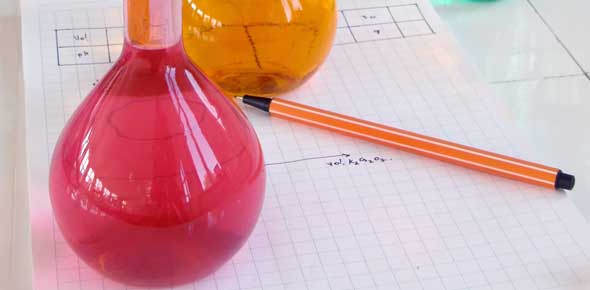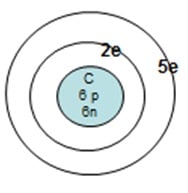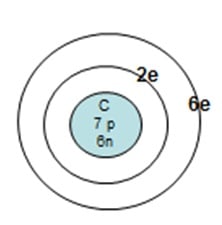Basic Chemistry

Charges of subatomic particles; separating substances, basic Bohr model
- 1.
Which of the following is true about protons?
- A.
Protons have a positive charge, found outside the nucleus and have 1 amu (atomic mass unit).
- B.
Protons are found in the nucleus, have a positive charge and a mass of 1 amu (atomic mass unit)
- C.
Protons have a negative charge, found outside the nucleus and have 1 amu (atomic mass unit)
- D.
Protons have no charge and are found in the nucleus and have a mass of 1 amu.
Correct Answer
B. Protons are found in the nucleus, have a positive charge and a mass of 1 amu (atomic mass unit) -
- 2.
Which is a possible correct Bohr model for Carbon? (Use a periodic table for reference).
- A.
- B.
- C.
Correct Answer
A. Option 1 -
- 3.
Complete the following: Element # of protons # of neutrons Atomic mass (amu) Atomic number Number of electrons W 38 49 X Y Z
- A.
W = Element is Indium , X = 87; Y = 49 and Z = 38
- B.
W = Element is Indium , X = 87; Y = 49 and Z = 49
- C.
W = Element is Strontium, X = 87; Y = 38 and Z = 38
- D.
W = Element is Strontium, X = 87; Y = 38 and Z = 39
Correct Answer
C. W = Element is Strontium, X = 87; Y = 38 and Z = 38 -
- 4.
In a neutral atom, which two subatomic particles must be equal in number?
- A.
Protons and electrons
- B.
Protons and neutrons
- C.
Neutrons and electrons
- D.
Protons, neutrons and electrons
Correct Answer
A. Protons and electrons -
- 5.
Sodium, when neutral, will have 11 electrons and 11 protons. What will its charge be if it loses 1 electron?
- A.
-1
- B.
+1
- C.
+2
- D.
-1
Correct Answer
B. +1Explanation
(11+) and (11-) changes to 11 + and 10 -.Rate this question:
-
- 6.
Which method of separation would work best to separate the components of blood?
- A.
Distillation
- B.
Filtration
- C.
Chromatography
- D.
Centrifuge
Correct Answer
D. Centrifuge -
Quiz Review Timeline +
Our quizzes are rigorously reviewed, monitored and continuously updated by our expert board to maintain accuracy, relevance, and timeliness.
-
Current Version
-
Dec 15, 2013Quiz Edited by
ProProfs Editorial Team -
Dec 14, 2013Quiz Created by
Kwchiro
- Atomic Theory Quizzes
- Chemical Bonding Quizzes
- Chemical Compound Quizzes
- Chemistry Practice Quizzes
- Clinical Chemistry Quizzes
- Electrolysis Quizzes
- Functional Group Quizzes
- Gas Quizzes
- General Chemistry Quizzes
- IBSL Chemistry Quizzes
- Medicinal Chemistry Quizzes
- Molecule Quizzes
- Rate Of Reaction Quizzes
- Reaction Quizzes
- Soap Quizzes
- Solution And Mixture Quizzes
- State Of Matter Quizzes
- Stoichiometry Quizzes
 Back to top
Back to top



.jpg)

